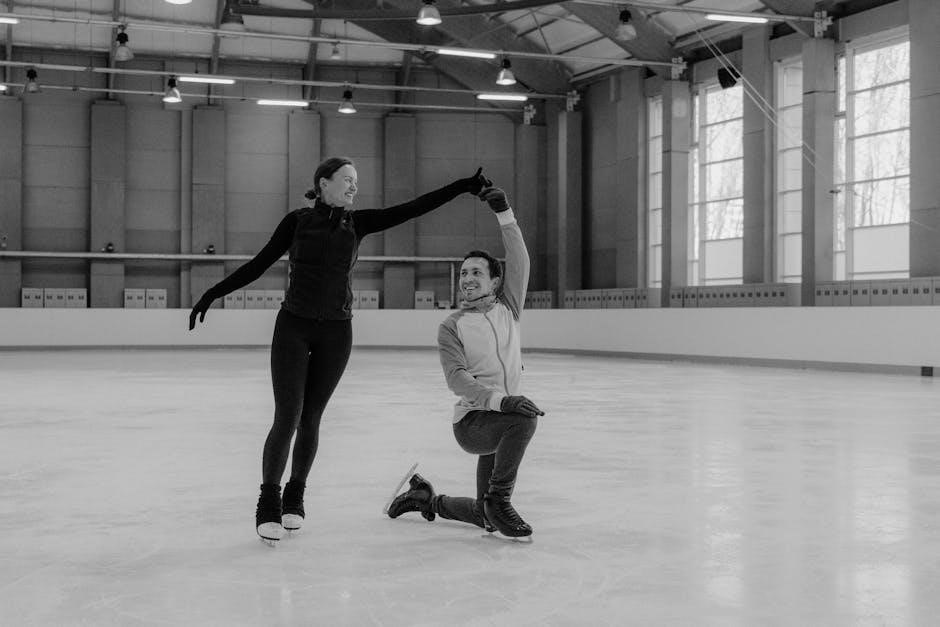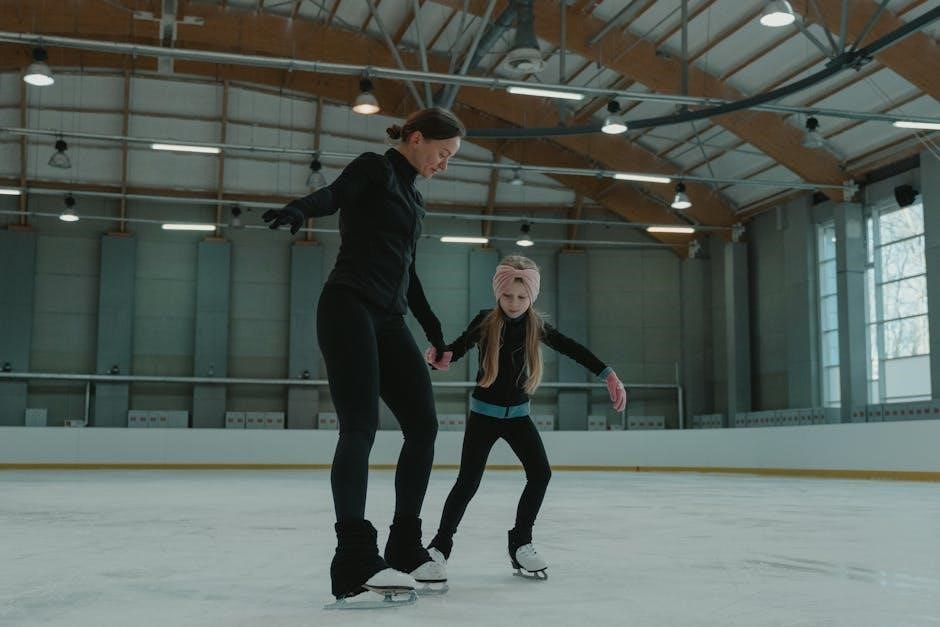A laminectomy is a surgical procedure to relieve pressure on the spinal cord or nerves, often due to herniated discs or spinal stenosis. Post-operative recovery focuses on rest, proper body mechanics, and gradual reintroduction of movement to promote healing and strength.

Importance of Post-Operative Exercises After Laminectomy
Post-operative exercises play a critical role in recovery after a laminectomy, enhancing healing, strength, and mobility. These exercises help restore spinal stability, improve flexibility, and reduce the risk of complications. By strengthening core muscles, patients can better support their spine and prevent future pain. Gentle movements also promote blood flow, aiding in wound healing and reducing stiffness. A structured exercise program minimizes muscle atrophy and improves posture, which is essential for long-term spinal health. Additionally, exercises help patients gradually return to daily activities and maintain independence. Consistency in performing these exercises ensures a smoother and more effective recovery, reducing the likelihood of recurring symptoms. Proper guidance from a physiotherapist is crucial to tailor exercises to individual needs, ensuring safety and maximizing benefits. Regular exercise not only accelerates recovery but also enhances overall quality of life post-surgery.

Exercise Program for Post-Laminectomy Recovery
A structured exercise program is essential for post-laminectomy recovery, focusing on gradual progression from wound healing to advanced strengthening. It enhances mobility, strength, and spinal stability, ensuring a safe and effective return to daily activities.
Phase 1: Immediate Post-Operative Phase (0-2 weeks)
During the first two weeks after surgery, the focus is on wound healing and protection. Patients should prioritize pain control, proper body mechanics, and gentle mobilization. Activities such as short walks (10 minutes, 2 times a day) and deep breathing exercises are recommended to prevent complications and promote circulation. Specific exercises include ankle pumps, TA bracing, and glute sets, which are done isometrically to avoid strain. Patients are advised to avoid heavy lifting, bending, or twisting during this period. Log-rolling techniques are encouraged for getting in and out of bed to minimize spinal movement. The goal is to ensure the surgical site heals properly while maintaining basic mobility and strength without overexertion. Supervised physical therapy typically begins around two weeks post-op, but initial recovery focuses on rest and cautious movement to lay a foundation for more advanced exercises in later phases.
Phase 2: Early Mobilization Phase (2-6 weeks)
During this phase, the focus shifts to gradually increasing mobility and strength while protecting the surgical site. Patients begin supervised physical therapy, incorporating exercises like clamshells, standing leg exercises, and gentle stretching for hip flexors and hamstrings. Walking programs are progressed to 15-30 minutes per session, and activities like stationary biking or water exercises may be introduced. Emphasis is placed on proper body mechanics and postural awareness to minimize facet loading. Patients are encouraged to avoid heavy lifting, bending, or twisting. Strengthening exercises, such as glute sets and TA bracing, are continued to improve core stability. Light cardio activities like swimming or yoga may be added after 6-8 weeks, depending on progress. The goal is to restore flexibility, strength, and confidence while ensuring the spine remains protected. Regular follow-ups with a physical therapist are crucial to tailor exercises to individual recovery and prevent overexertion during this critical period.

Phase 3: Advanced Strengthening Phase (6-12 weeks)
Phase 3 focuses on advancing strength, flexibility, and functional activities to prepare for daily life and more strenuous tasks. Patients progress to dynamic exercises like push-up progressions from knees to full form, ensuring proper spinal alignment. Functional training tailored to specific sports or work-related activities is introduced, emphasizing movements that mimic real-life tasks. Core strengthening exercises, such as advanced TA bracing in various positions, are intensified to enhance spinal stability. Aerobic activities like elliptical training and swimming are encouraged to improve cardiovascular fitness without excessive spinal strain. Patients are guided to gradually incorporate light resistance training and stretching routines, avoiding any movements that cause discomfort. Regular assessments with a physical therapist ensure exercises are appropriately challenging and safe. The goal is to achieve full recovery, enabling patients to resume normal activities with confidence and minimal risk of re-injury. This phase lays the foundation for long-term spinal health and functionality.
Common Laminectomy Exercises
Common exercises include deep abdominal strengthening, diaphragmatic breathing, neural glides, clamshell exercises, and gentle stretching. These activities aim to improve core stability, flexibility, and spinal mobility while minimizing strain on the surgical site.
Deep Abdominal Exercises
Deep abdominal exercises are a cornerstone of post-laminectomy rehabilitation, focusing on strengthening the transverse abdominis (TA) muscle. The TA muscle acts as a natural corset, providing stability to the spine. One common exercise is the TA brace, where patients engage the muscle by drawing their belly button toward the spine without breathing. This is typically held for 5-10 seconds and repeated 10-15 times. Another exercise involves isometric contractions in different positions, such as lying on the back, sitting, or standing, to progressively challenge the core muscles. Proper breathing techniques, such as diaphragmatic breathing, are often incorporated to enhance the effectiveness of these exercises. Patients are encouraged to perform these exercises within pain-free ranges and gradually increase repetitions as strength improves. Consistency is key, as strong abdominal muscles help reduce strain on the spine and support long-term recovery. These exercises are usually introduced early in the recovery process and are tailored to individual patient needs by physical therapists.
Diaphragmatic Breathing Techniques
Diaphragmatic breathing, also known as belly breathing, is a fundamental technique taught during post-laminectomy recovery. This method engages the diaphragm, the primary muscle for breathing, rather than shallow chest breathing. To perform it, patients lie on their back, place one hand on the abdomen and the other on the chest, and inhale deeply through the nose, allowing the abdomen to rise while the chest remains still. Exhalation is slow and controlled through pursed lips or the mouth, allowing the abdomen to fall. This technique promotes relaxation, reduces muscle tension, and enhances spinal stability. Diaphragmatic breathing is often combined with deep abdominal exercises to strengthen core muscles and improve posture. Patients are advised to practice this technique several times daily, starting with 5-10 minutes and gradually increasing as comfort allows. Proper breathing not only aids in physical recovery but also helps manage stress and promotes overall well-being during the healing process. Consistency in practicing diaphragmatic breathing is crucial for maximizing its benefits and supporting a smooth recovery journey.

Precautions and Safety Guidelines for Exercises
Following laminectomy, it is essential to adhere to specific precautions to ensure a safe and effective recovery. Patients should avoid activities that involve bending, twisting, or heavy lifting, especially during the initial healing phase. Log-rolling techniques should be used to move in and out of bed to minimize spinal movement. Activities that cause pain or discomfort should be avoided, and patients must not exceed recommended weight limits for lifting, typically starting at 5 pounds and gradually increasing as tolerated. Aerobic exercises, such as walking, should be introduced cautiously, with short durations initially and progression under supervision. Swimming and yoga are permitted after 8 weeks, provided they are low-impact and avoid repetitive spinal loading. Patients should also avoid repetitive facet loading activities and any exercises involving neck bending or twisting during the early stages. Proper body mechanics and posture must be maintained during all activities to protect the spine. Regular follow-ups with a physiotherapist are crucial to ensure exercises are performed safely and appropriately, avoiding overexertion or strain. Adhering to these guidelines helps minimize complications and supports a successful recovery.
Engaging in a structured exercise program after laminectomy is vital for optimizing recovery, reducing pain, and restoring strength and mobility. By progressing through the phases of post-operative exercises, patients can safely transition from initial healing to advanced strengthening. Consistency and adherence to prescribed exercises, combined with proper body mechanics and posture, are key to preventing complications and achieving long-term spinal stability. Aerobic activities like walking, swimming, and yoga, introduced at appropriate stages, further enhance cardiovascular health and flexibility. It is crucial to avoid overexertion and follow individualized guidelines tailored by healthcare professionals. Patients should prioritize activities that promote spinal health while minimizing repetitive strain. With dedication and careful adherence to exercise protocols, individuals can effectively manage their recovery, reduce the risk of future issues, and resume daily activities with confidence. Regular follow-ups with therapists ensure personalized adjustments, fostering a comprehensive and successful rehabilitation journey.